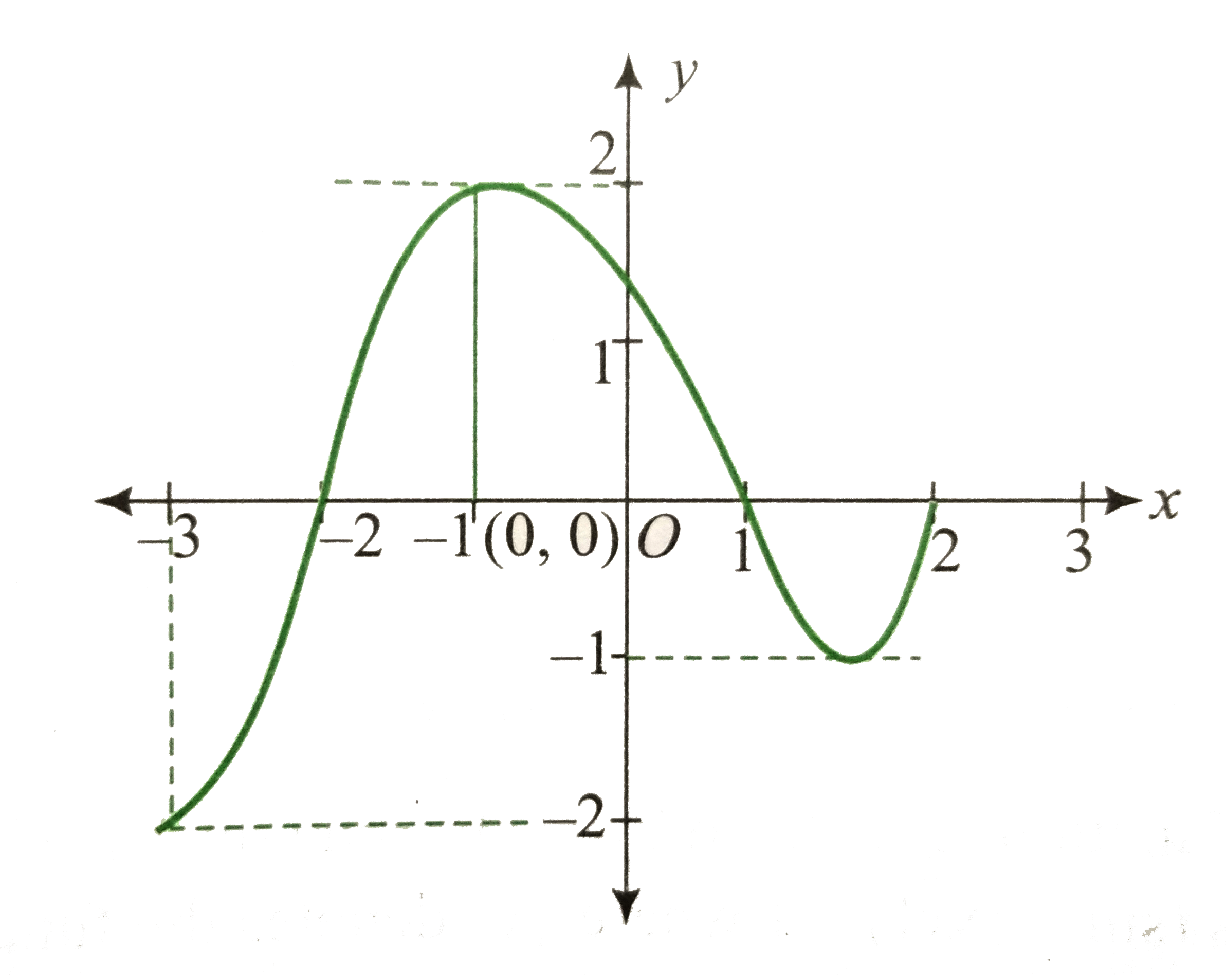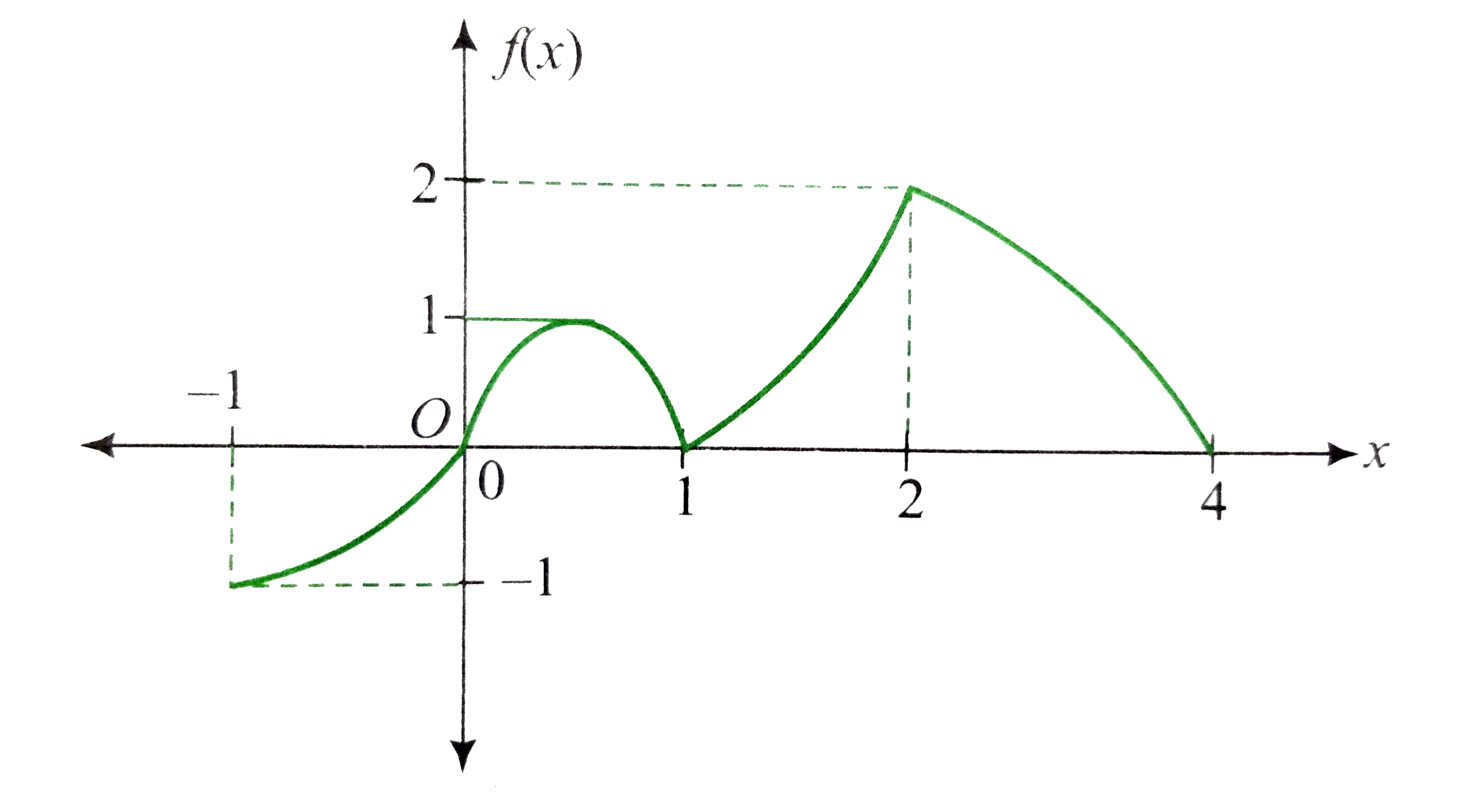Complete Solutions to Multiple Correct Answer Type of chapter RELATIONS AND FUNCTIONS of Class 12 book with complete answers and questions
| Class 12 | MATHS |
| Chapter | RELATIONS AND FUNCTIONS |
| CENGAGE NEW | Multiple Correct Answer Type |
| Number Of Questions | 27 |
| Academic Year | 2023-24 |
Let `f(x)=sec^(-1)[1+cos^(2)x],` where [.] denotes the greatest integer function. Then the
View SolutionLet `f : R rarr[-1,oo] and f(x)= ln([|sin 2 x|+|cos 2 x|])` (where[.] is greatest integer function), then -
View SolutionIf `f: RvecNuu{0},` where `f` (area of triangle joining points `P(5,0),Q(8,4)a n dR(x , y)` such that angle PRQ is a right angle `=` number of triangles, then which of the following is true? `f(5)=4` (b) `f(7)=0` `f(6. 25)=2` (d) `f(x)is into
View SolutionThe domain of the function
`f(x)=log_(e){log_(|sinx|)(x^(2)-8x+23)-(3)/(log_(2)|sinx|)}`
contains which of the following interval (s) ?
View SolutionLet `f(x)=sgn(cot^(-1)x)+tan(pi/2[x]),` where `[x]` is the greatest integer function less than or equal to `x ,` then which of the following alternatives is/are true? `f(x)` is many-one but not an even function. `f(x)` is a periodic function. `f(x)` is a bounded function. The graph of `f(x)` remains above the x-axis.
View Solution`f(x)=sqrt(1-sin^(2)x)+sqrt(1+tan^(2)x)` then
View SolutionIf the following functions are defined from `[-1,1]to[-1,1],` select those which are not objective. `sin(s in^(-1)x)` (b) `2/pisin^(-1)(sinx)` `(sgn(x))1N(e^x)` (d) `x^3(sgn(x))`
View SolutionLet `f(x)={x^2-4x+3,x<3x-4,xgeq3` `a n dg(x)={x-3,x<4x^2+2x+2,xgeq4` then which of the following is/are true? `(f+g)(3. 5)=0` `f(g(3))=3` `(fg)(2)=1` (d) `(f-g)(4)=0`
View SolutionLet `f(x)="max"(1+s in x ,1,1-cosx),x in [0,2pi],a n dg(x)=max{1,|x-1|}, x in Rdot` Then `g(f(0))=1` (b) `g(f(1))=1` `f(f(1))=1` (d) `f(g(0))= 1 + sin1`
View SolutionConsider the function `y =f(x)` satisfying the condition `f(x+1/x)=x^2+1/(x^2)(x!=0)`. Then the
View SolutionConsider the real-valued function satisfying `2f(sinx)+f(cosx)=xdot` then the domain of `f(x)i sR` domain of `f(x)i s[-1,1]` range of `f(x)` is `[-(2pi)/3,pi/3]` range of `f(x)i sR`
View SolutionIf `f: R^+vecR^+` is a polynomial function satisfying the functional equation `f(f(x))=6x=f(x),t h e nf(17)` is equal to 17 (b) `51` (c) `34` (d) `-34`
View Solution`f(x)=x^2-2a x+a(a+1),f:[a ,oo)vec[a ,oo)dot` If one of the solution of the equation `f(x)=f^(-1)(x)i s 5049 ,` then the other may be (a)5051 (b) 5048 (c) 5052 (d) 5050
View SolutionWhich of the following function is/are periodic? `(a)f(x)={1,xi sr a t ion a l0,xi si r r a t ion a l` `(b)f(x)={x-[x];2n
View SolutionLet `f(x)=(3)/(4)x+1,f^(n)(x)` be defined as `f^(2)(x)=f(f(x)),` and for `n ge 2, f^(n+1)(x)=f(f^(n)(x))." If " lambda =lim_(n to oo) f^(n)(x),` then
View Solutionlf the fundamental period of function `f(x)=sinx + cos(sqrt(4-a^2))x` is `4pi`, then the value of a is/are
View Solution`f(x)=sin^(-1)[e^(x)]+sin^(-1)[e^(-x)]` where [.] greatest integer function then
View Solution`[2x]-2[x]=lambda` where [.] represents greatest integer function and {.} represents fractional part of a real number then
View SolutionThe set of all values of x satisfying `{x}=x[xx] " where " [xx]` represents greatest integer function `{xx}` represents fractional part of x
View SolutionThe function 'g' defined by `g(x)= sin(sin^(-1)sqrt({x}))+cos(sin^(-1)sqrt({x}))-1` (where {x} denotes the functional part function) is (1) an even function (2) a periodic function (3) an odd function (4) neither even nor odd
View SolutionIf the function / satisfies the relation `f(x+y)+f(x-y)=2f(x),f(y)AAx , y in R and f(0)!=0` , then
View SolutionLet `f(x)+f(y)=f(xsqrt(1-y^2)+ysqrt(1-x^2))[f(x)` is not identically zero]. Then `f(4x^3-3x)+3f(x)=0` `f(4x^3-3x)=3f(x)` `f(2xsqrt(1-x^2)+2f(x)=0` `f(2xsqrt(1-x^2)=2f(x)`
View SolutionLet `f: RvecR` be a function defined by `f(x+1)=(f(x)-5)/(f(x)-3)AAx in Rdot` Then which of the following statement(s) is/are ture? `f(2008)=f(2004)` `f(2006)=f(2010)` `f(2006)=f(2002)` `f(2006)=f(2018`
View SolutionLet a function `f(x), x ne 0` be such that
`f(x)+f((1)/(x))=f(x)*f((1)/(x))" then " f(x)` can be
View SolutionLet `f` be a differential function such that `f(x)=f(2-x)` and `g(x)=f(1+x)` then
View SolutionThe figure illustrates the graph of the function `y=f(x)` defined in [-3, 2].

Identify the correct statement(s)?
View SolutionIf graph of a function `f(x)` which is defined in [-1, 4] is shown in the following figure then identify the correct statement(s).

View Solution
Multiple Correct Answer Type questions and complete solutions for chapter RELATIONS AND FUNCTIONS of CENGAGE MATHS (ENGLISH) of Class 12
All Exercises from CENGAGE NEW Class 12 MATHS RELATIONS AND FUNCTIONS
- Archives(Matrix Match Type)
- Archives(Multiple Correct Answer Type)
- Archives(single correct Answer Type)
- CONCEPT APPLICATION EXERCISE 1.1
- CONCEPT APPLICATION EXERCISE 1.10
- CONCEPT APPLICATION EXERCISE 1.11
- CONCEPT APPLICATION EXERCISE 1.12
- CONCEPT APPLICATION EXERCISE 1.13
- CONCEPT APPLICATION EXERCISE 1.14
- CONCEPT APPLICATION EXERCISE 1.15
- CONCEPT APPLICATION EXERCISE 1.2
- CONCEPT APPLICATION EXERCISE 1.3
- CONCEPT APPLICATION EXERCISE 1.4
- CONCEPT APPLICATION EXERCISE 1.5
- CONCEPT APPLICATION EXERCISE 1.6
- CONCEPT APPLICATION EXERCISE 1.7
- CONCEPT APPLICATION EXERCISE 1.8
- CONCEPT APPLICATION EXERCISE 1.9
- ILLUSTRATION
- Linked Comprehension Type
- Matrix Match Type
- Multiple Correct Answer Type
- Numerical value Type
- Single Correct Answer Type
- Solved Examples